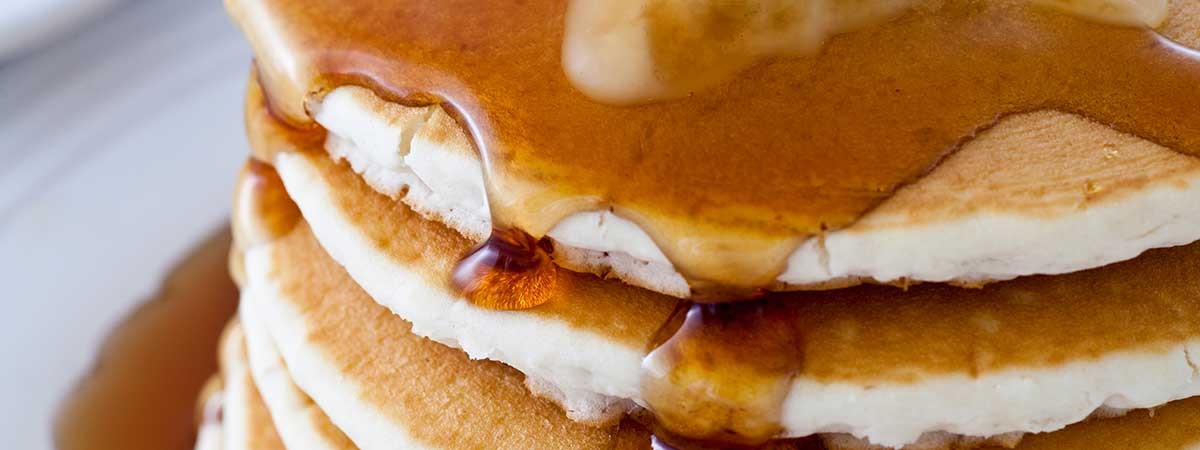Canadian maple syrup is becoming increasingly popular worldwide. Vacuum pumps are used to help tap the sap directly from the tree.
According to legend, it was an American native of the Iroquois tribe who discovered the wonderful sweetness in the water of maple sugar. She drew water from a hollow tree trunk and noticed the treasured taste. What is certain is that the inhabitants of North America tapped the trees long before Columbus, collected the maple water in small containers and later boiled it down to syrup.
The European settlers took over the preference for the tasty product and the method of its extraction. In principle, the method remained unchanged for a long time. It was not until the latter part of the last century that the process began to be made more efficient using new technology. At that time hoses were connected to the taps cut into the wood. Instead of dripping into individual buckets, the maple water was supposed to flow into larger collection containers. Vacuum pumps were also used for the first time to transport its flow.
However, the new methods had their pitfalls. Maple water can only be harvested in spring when the trees finish their hibernation and prepare for budding. Nights are still cold at that time of year – meaning the metal taps and fittings tended to freeze and block the maple water flow. Equally, they were not very tight and were not able to maintain a high vacuum level. This situation compelled Donald Lapierre from Canada to develop an extraction system in the 1970s that used plastic components. He also founded the company Les Équipements Lapierre for production and marketing.
Using his method, it was possible to collect the maple water much more efficiently. The plastic taps were also much smaller than the conventional devices – and this was good for the trees. The Maple Research Center at the University of Vermont has investigated the effects of using vacuum technology on trees and studied the quality of the syrup, revealing that neither the health of the trees nor the quality of the syrup suffers as a result.
Today, mass production is based on such systems to which thousands of trees are connected. However, until recently most maple farms used liquid ring and oil-lubricated rotary vane vacuum pumps, a technology commonly used by the farmers for milking the cows on the farms. These types of vacuum pumps require regular maintenance, which involves considerable effort when used scattered across the forests between Missouri and Quebec.
Once again, Les Équipements Lapierre in partnership with Busch found the optimal solution. The company, which to this day is managed by its founder, offers extraction systems with MINK claw vacuum pumps from Busch. The dry vacuum pumps do not require any operating fluid and are practically maintenance-free. They produce a completely clean vacuum, requiring no operating fluids, and are therefore ideal for handling food. For their integration of this solution in the maple syrup production, it was announced in November 2018 that Les Équipements Lapierre was the winner of Busch's annual Innovation in Vacuum Award.

Tree Sap Sweetness
More maple syrup thanks to vacuum
How healthy is maple syrup?
Maple syrup consists mainly of sucrose and fructose. It is therefore mainly a sweetener, and so the same wisdom applies as with all things sweet: enjoy in moderation, please! Nevertheless, its sugar content is only between 66 and 68 percent. It therefore affects the glycemic index less significantly than sugar or honey, while offering a wonderfully unique sweetness.
What is more, apart from thickening, maple syrup is a natural raw product that contains a number of highly desirable ingredients in addition to carbohydrates and water. These include numerous vitamins and minerals as well as phenols, which could have an antibiotic effect. Even the American natives used the syrup as a medicine against inflammation and infection. In a laboratory test it was proven that an extract of maple syrup can increase the effect of antibiotics enormously. For some bacterial strains, the dose could be reduced by more than 90 percent. Research has only just begun, but it is hoped that maple phenols will provide a new way of reducing resistance to antibiotics.
Maple syrup consists mainly of sucrose and fructose. It is therefore mainly a sweetener, and so the same wisdom applies as with all things sweet: enjoy in moderation, please! Nevertheless, its sugar content is only between 66 and 68 percent. It therefore affects the glycemic index less significantly than sugar or honey, while offering a wonderfully unique sweetness.
What is more, apart from thickening, maple syrup is a natural raw product that contains a number of highly desirable ingredients in addition to carbohydrates and water. These include numerous vitamins and minerals as well as phenols, which could have an antibiotic effect. Even the American natives used the syrup as a medicine against inflammation and infection. In a laboratory test it was proven that an extract of maple syrup can increase the effect of antibiotics enormously. For some bacterial strains, the dose could be reduced by more than 90 percent. Research has only just begun, but it is hoped that maple phenols will provide a new way of reducing resistance to antibiotics.